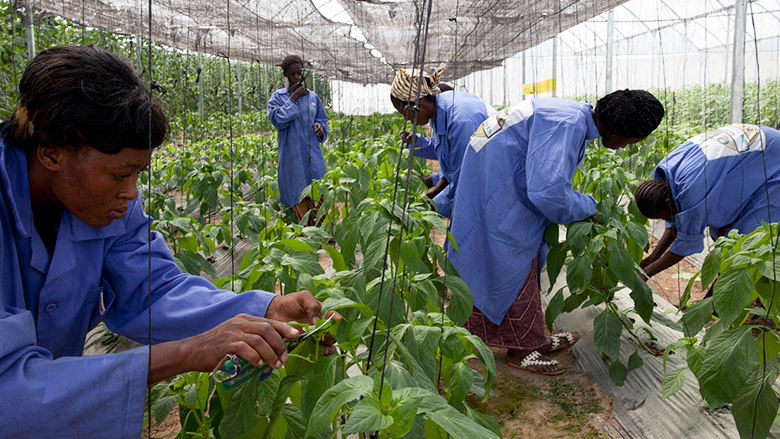Over the next 15 years, about 1.6 billion people in low and middle income countries will reach working age. Creating jobs for a new generation of workers while sustaining and improving the quality of employment of the billions of people already working will be a significant challenge for all sectors.
The food system currently employs the majority of people in both self and wage employment in developing countries, and will continue to do so for the foreseeable future. Jobs in the food system extend beyond agricultural production and account for a large share of the global economy’s manufacturing and services sectors. As per capita incomes increase and eating patterns shift, the demand for jobs in these off-farm segments of the food system – including processing, distribution, transportation, storage, retailing, preparation and restaurants -- will increase.
A new paper from the World Bank focuses on how the food system can deliver jobs and provides a framework for understanding the factors that determine the number and quality of jobs in the sector. The paper also highlights a set of actions that countries can adopt, adapt, and apply to their own circumstances to strengthen the food system’s contribution to employment.
Main Messages:
• The food system employs the most people in many developing countries in both self and wage employment, and will continue to do so during the time period set to achieve the Sustainable Development Goals, and thereafter. Self and wage employment in farming still generates a large share of rural incomes and can have large poverty-reducing effects.
• The food system extends beyond farm production to include activities along value chains, such as food processing, transportation, retailing, restaurants, and other services. In many countries, the off-farm aspect of the food system accounts for a large share of the economy’s manufacturing and services sectors. While the employment share in farming tends to decline as per capita incomes rise, the share in food manufacturing and services tends to increase.
• Increasing the number and inclusiveness of jobs will require attention to food system growth, employment intensity, and inclusion of youth and women. Urbanization and per capita income growth offers significant new opportunities in non-cereal products and in new jobs in the food system beyond the farm. Inclusion of women and the growing number of youth into food system jobs can raise productivity and improve social harmony.
• Improving the quality of jobs in the food system requires attention to raising returns to labor, increasing stability in earnings, and improving working conditions.
• Priorities vary by country context. Different combinations of interventions will be needed in agriculture-dependent economies relative to transforming or urbanized economies; in lagging relative to leading regions; in land abundant relative to land scarce environments; whether “pull” or “push” factors are leading to movement of people out of farming in particular areas; and on the initial nature of skills deficits.
